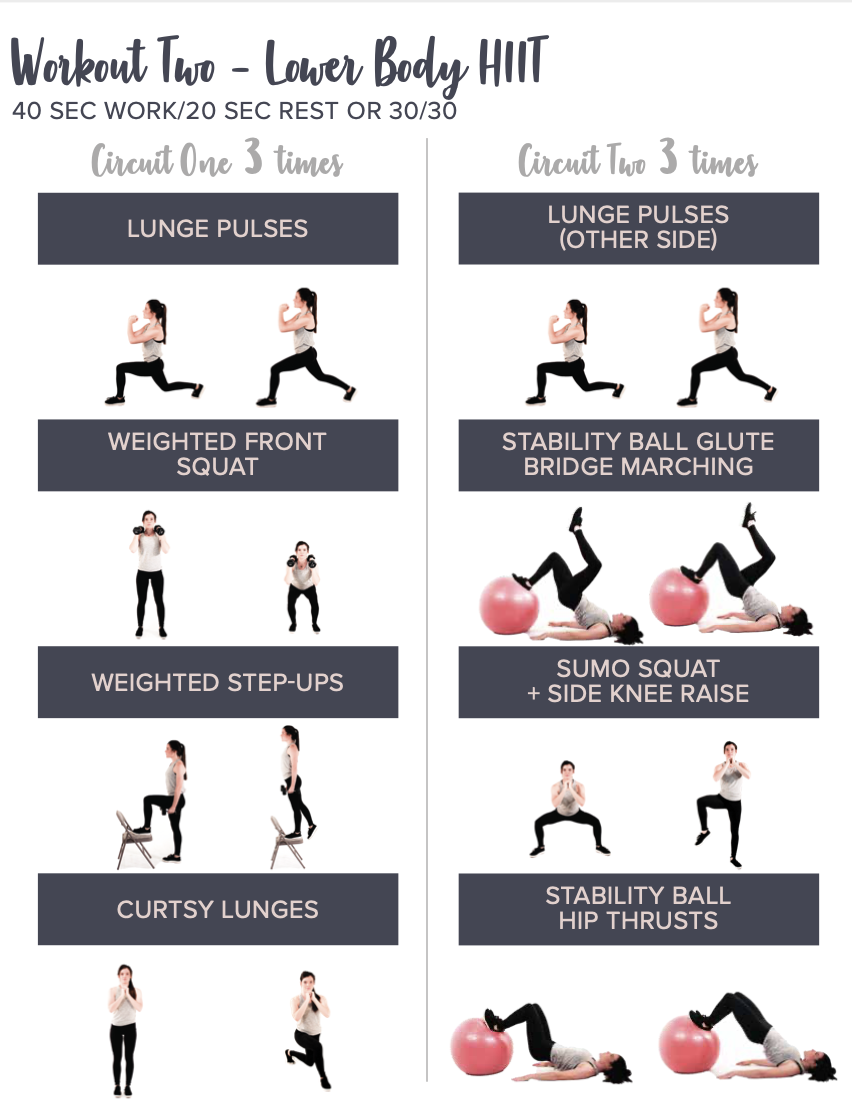The fourth trimester is a phase often filled with a mix of overwhelming bliss and daunting challenges, and physical activity can be an underrated yet crucial element in navigating this period. For new moms, re-integrating exercise into their routines isn’t just about losing pregnancy weight; it fosters mental well-being and boosts energy levels. Yet, stepping outside to a gym might seem like an insurmountable task with an infant to care for.
Historically, postpartum exercises have evolved from ancient practices to modern techniques tailored to bilateral convenience and efficacy. A compelling statistic reveals that engaging in just 20 minutes of physical activity three times a week can significantly reduce postpartum depression. At-home workouts, which can be customized to vary from gentle stretches to more dynamic movements, offer a versatile solution fitting seamlessly into the flexible yet restricted schedules of new mothers.

The Importance of Postpartum Workouts
Physical exercise after childbirth is incredibly beneficial. It helps new moms regain strength and energy. Engaging in regular workouts can also reduce feelings of anxiety and depression.
Postpartum workouts are essential for recovery. They aid in muscle toning, which is crucial after the physical strain of pregnancy. Additionally, they improve blood circulation and boost overall health.
Another significant advantage is that these workouts assist in managing weight. Many new moms are concerned about losing pregnancy weight, and regular exercise can help. It also promotes better sleep, which is often elusive in the initial months.
Incorporating workouts can enhance bonding time. Activities like baby yoga or stroller walks allow moms to exercise while spending quality time with their infants. This combination of physical activity and emotional bonding can be both fulfilling and effective.
Finding the Time: Fitting Exercise into Your New Routine
For new moms, finding time to exercise can be a challenge. Integrating short workout sessions into your daily routine is a practical solution. This can help maintain both physical health and mental well-being.
Creating a Flexible Schedule
Flexibility is key when balancing newborn care and personal time. Instead of setting strict workout times, aim for adaptable windows throughout the day. Activities like taking short walks or performing stretches while the baby naps can be beneficial.
Consider breaking workouts into smaller segments. For example, 10-minute sessions spread across the day are often more manageable. These quick bouts of activity can add up to substantial benefits.
Utilizing early mornings or late evenings might provide a peaceful environment to exercise. When your baby is asleep, it could be the perfect opportunity for a yoga routine or light cardio.
Multi-tasking Strategies
Incorporate exercise into daily activities. You can do squats while folding laundry or lunges while cooking. This makes efficient use of time and keeps you active.
Using a wearable baby carrier allows for hands-free movement. You can perform low-impact exercises while still keeping your baby close. This approach also adds a bit of resistance training to your routine.
Make use of baby naptimes. Perform at-home workouts or follow online fitness videos tailored to postpartum mothers. It’s a convenient way to stay active without needing to leave the house.
Support from Family and Friends
Enlist help from your partner or family members to manage time effectively. Ask for small windows of time: even 20 minutes of uninterrupted activity can make a difference. Sharing responsibilities eases the load and allows you to focus on yourself.
Organize group activities with other new moms. Stroller walking groups or mommy-and-me classes can be social and beneficial. It’s an excellent way to connect with others while staying active.
Utilize childcare if available. Temporary babysitting services or cooperative babysitting circles can free up time for regular exercise. This ensures that your health and well-being are not neglected.
Safe and Effective Postpartum Workouts at Home
Engaging in safe and effective workouts at home is crucial for postpartum recovery. Start with gentle exercises like walking or basic stretching. These activities help restore muscle strength and improve blood flow.
Consider focusing on exercises that enhance core stability. Pelvic tilts and bridges are great options. They are low-impact but highly effective for strengthening the abdominal and pelvic muscles.
| Exercise | Description |
|---|---|
| Pelvic Tilts | Lie on your back and gently tilt your pelvis upward while squeezing your abdominal muscles. |
| Bridges | Lie on your back with your knees bent and lift your hips toward the ceiling. |
Include activities that promote flexibility, such as yoga or Pilates. These can be easily done at home with minimal equipment. They not only improve flexibility but also reduce stress and promote relaxation.
Gradually incorporate more dynamic movements as your strength increases. Light weights or resistance bands can add intensity to your workouts. Always listen to your body and adjust exercises accordingly to avoid overexertion.
Focusing on Key Areas: Strengthening the Core and Pelvic Floor
Strengthening the core and pelvic floor is vital for postpartum recovery. These areas endure significant changes during pregnancy and childbirth. Focused exercises can help restore their functionality and strength.
Begin with gentle core exercises like pelvic tilts and gentle abdominal contractions. These are safe and effective ways to re-engage your core muscles. Gradually increase the intensity as your body regains strength.
- Pelvic Tilts: Lie on your back, bend your knees, and gently rock your pelvis.
- Abdominal Contractions: Sit or lie down, tighten your abdominal muscles, and hold for a few seconds.
Pelvic floor exercises, such as Kegels, are equally important. These exercises target the muscles that support the bladder, uterus, and bowel. Regular practice can help prevent urinary incontinence and other related issues.
Utilize props like an exercise ball or small weights to add variety and resistance to your regimen. Incorporating these tools can enhance the effectiveness of your workouts. They also make the exercises more engaging and fun.
Always pay attention to your body’s signals. Avoid exercises that cause pain or discomfort. Consulting with a healthcare provider before starting any exercise program is a good idea to ensure it fits your specific needs.
How to Progress: Increasing Intensity Over Time
Gradually increasing the intensity of your workouts is essential for continued progress. Start by adding a few extra minutes to your exercise routine each week. Monitor your body’s response to ensure you’re not overexerting yourself.
Once you feel comfortable, incorporate light weights or resistance bands into your exercises. These tools add extra challenge and help build muscle strength. Ensure you’re using proper form to avoid injury.
- Week 1-2: Add 5-10 minutes of cardio.
- Week 3-4: Incorporate 1-2 pound weights.
- Week 5-6: Introduce resistance bands for added strength training.
Mix up your workouts to keep them challenging and exciting. Alternate between different types of exercises such as yoga, Pilates, and strength training. This variety helps prevent boredom and targets different muscle groups.
Track your progress in a journal or app. Noting changes in strength, stamina, and energy levels keeps you motivated. Celebrating small milestones along the way can boost your confidence.
Listen to your body at all times. If you experience pain or discomfort, it’s crucial to reduce the intensity or take a break. Consulting with a fitness expert or healthcare provider can provide additional insights tailored to your needs.
Additional Resources and Professional Guidance
Seeking additional resources can greatly improve your postpartum workout routine. Online platforms offer a wealth of information and tailored fitness programs. Websites like YouTube and specialized fitness apps can provide guided workouts designed for new moms.
Consider signing up for online classes led by certified postnatal fitness instructors. These professionals understand the specific needs and limitations of postpartum bodies. Guided sessions ensure you’re performing exercises correctly and reduce the risk of injury.
- Online video tutorials
- Postnatal fitness apps
- Virtual group classes
Books and eBooks are also valuable resources. They can offer detailed workout plans and tips for maintaining motivation. Many books include personal stories and advice from experienced moms, which can be both inspiring and practical.
Joining local support groups or communities can be beneficial too. Connecting with other new moms provides emotional support and accountability. Many communities even organize group workout sessions, adding a social element to your fitness routine.
Finally, never underestimate the value of professional guidance from healthcare providers. Consulting with a physical therapist or a doctor can provide personalized advice tailored to your recovery needs. Professional input ensures your workout routine is safe and effective.
Key Takeaways
- Postpartum workouts help new moms recover strength and boost mental well-being.
- Safe exercises include pelvic tilts, gentle stretches, and short cardio bursts.
- Fitting workouts into daily routines can be easy and flexible.
- Utilizing baby naps for fitness sessions ensures uninterrupted exercise time.
- Combining workouts with bonding time promotes overall health and connection.

Frequently Asked Questions
Here are some common questions about postpartum workouts. These answers aim to help new moms understand the best ways to take care of their bodies after childbirth.
1. When can I start exercising after giving birth?
You can typically start light exercises, such as walking, a few days after delivery. However, it’s essential to consult your doctor before beginning any workout routine, especially if you had a C-section or complications during delivery.
Your body needs time to heal, so listen to any discomfort signals it may send. Gradually increase activity levels based on how you feel and follow guidelines from health professionals.
2. What types of exercises are safe for postpartum recovery?
Gentle exercises like walking, pelvic tilts, and stretching are generally safe for postpartum recovery. These activities engage muscles without putting too much strain on your body.
You can also try yoga or Pilates tailored for new moms to enhance flexibility and strength. Always ensure any exercise is comfortable and doesn’t cause pain.
3. How much exercise should I do each week post-birth?
Aiming for at least 150 minutes of moderate aerobic activity per week is advisable. This can be broken down into more manageable 10-20 minute sessions throughout the day.
Consistency is key; even short bursts of activity have significant benefits over time. Always adapt your exercises based on how you’re feeling physically each day.
4. Can I integrate my baby into my workout routine?
Yes, many new moms find it beneficial and enjoyable to include their infants in their exercise routines. Activities such as stroller walks or mom-and-baby yoga classes provide both exercise and bonding opportunities.
This approach helps maintain regular physical activity while spending quality time with your baby. It also introduces fitness as a fun part of daily life together.
5. What signs indicate that I’m overexerting myself?
If you experience persistent pain, excessive fatigue, or unusual bleeding during or after workouts, these could be signs of overexertion. It’s crucial to stop immediately and rest if these symptoms occur.
You should also consult a healthcare provider if these signs persist or worsen over time. Listening to your body and not pushing too hard ensures a safe return to fitness.

Conclusion
Postpartum workouts at home are vital for new moms looking to regain strength and foster well-being. They offer flexibility and the convenience of blending exercise with daily chores. The key is starting gently and gradually increasing the intensity.
Remember to listen to your body and consult professionals when needed. Utilizing available resources can make your fitness journey enjoyable and effective. Prioritizing your health benefits both you and your baby in the long run.
